Last summer when Wahoo announced the KICKR V5/2020, one of the new features was a new port on the side of the trainer that would allow you to plug it into your home (or office) network, as a means to bypass any wireless connectivity issues you might have. While most of us use wireless connections just fine, some of us aren’t as lucky – especially if living in a crowded RF space like a large apartment building. Similarly, this could be appealing for certain esports events as well.
Anyway, the KICKR V5/2020 didn’t actually have an ethernet port on the side, but rather something akin to a telephone port. That would in turn require you to buy an adapter (aka, a dongle), and plug it in. Then you’d plug the cable into that. After which, apps would be updated to see this new connectivity type (in addition to the usual ANT+ & Bluetooth Smart connections).
Long story short – as of this morning you can now buy that $99 dongle.
Now I had planned for a full in-depth review to be released today…but…umm…things have not been going smoothly. However, in this rare scenario I don’t think it’s a representation of the product per se, but rather, the timing. Simply put – the 3rd party apps aren’t all ready yet and the final firmware just arrived in the last couple of days for them to make it ready. If this were a week from now, it’d likely be a different story. But as of this very second when the embargo lifts, the apps are a motley but trying crew that looks like they just finished a hard night out at the bars. All the bars….all the drinks…all night.
So, I’ll circle back next week or so with the final review and all the app players. That review will look vaguely like this post but with a whole lot more detail on some of the nuances, and how each app has implemented it. Also, it has arguably the best intro to a video I’ve ever shot.
The Quick Details:
Above is the box you’ll receive the Direct Connect cable in, it’s roughly akin to every other Wahoo Fitness box. Inside you’ll find the dongle and a quick release extension cable for said dongle. And yes, I’m going to keep saying dongle. Because…I’m a 5-year-old boy.
The extension cable is actually there in case you trip over the ethernet cable, since it’ll dethatch cleanly rather than ripping apart your dongle or KICKR port. It works the same way as their power cable. If there were one redeemable aspect for not having a native ethernet port, the quick-release safety cable would be it.
In any event, you’ll take the quick release cable, and the dongle, and stick all the pieces together attached to your KICKR V5/2020.
Oh, and then stick an Ethernet cable into it:
After that, plug the other end of the ethernet cable into your router/hub/switch (technically you can plug it straight into the ethernet port of a computer if you wanted to):
Remember, the goal here is getting the KICKR data stream onto your home network. The app device that you’re using could be wired (like a computer) or wireless (like a phone). While it may seem counterintuitive to then go back to a wireless tablet or phone, the reality is that for most people, it’s not WiFi dropouts that are the issue – but dropouts with ANT+ or Bluetooth Smart (due to WiFi or other interference). Still, in my case I used both a wired Apple TV (for fun), a Mac (WiFi), and an iOS device (WiFi) to demonstrate all the variants.
If you were to crack open the Wahoo Fitness app (the one where you can pair sensors and such), you’ll see the KICKR status of the Direct Connect connection (shown below ‘KICKR CLIMB’). It’ll show ‘disconnected’ for the TCP connection status when an app isn’t actively using it. It allows one concurrent app via ethernet at a time.
Now, crack open our favorite trainer app of choice to get pairing. Officially, Wahoo says the following in their press release today:
“As of today, Wahoo’s SUF Training System, TrainerRoad, FulGaz, and RGT Cycling are compatible. Other platforms are expected to become compatible in the coming months, including Zwift.”
Officially, here’s the actual real-world status of all the apps as of the moment this goes live:
FulGaz: In beta builds, but not fully working yet in my testing
RGT: Fully functional in public production version
The Sufferfest: Supposed to be working in production, but not for me or others
TrainerRoad: In certain beta builds, but not fully working yet in my testing. Targeting early February for release.
Zwift: According to Zwift’s product & PR team, actual official target is “later this year”
I haven’t checked with all the other trainer apps out there yet, but will add them to the list if they shoot over their ETA’s.
And since Zwift is obviously the elephant in the room here (and arguably the platform that needs it the most), here’s the full quote from Zwift on that one, based on my question on when exactly it’ll be compatible with Zwift:
“The initial work has begun and Zwift will offer support to the Wahoo Direct Connect Adaptor across all platforms once all QA testing has been completed later this year.
Hard deadline in-game is not in sight at this moment, but we’ll communicate it as soon as we get further along in the testing process.”
Got all that? Good, now, we’ll pick the one app that works for me today: RGT. For that, you’ll use your mobile companion app to search for devices on the network. A few seconds later you’ll see the Wahoo KICKR trainer enumerate as both Direct Connect trainer as well as a Bluetooth Trainer (this was on iOS). It has a special icon that looks like a broom. I know…I know…it’s supposed to look like a Wahoo dongle.
In this case, the Direct Connect connection will take care of power and cadence, as well as trainer control. However, the ANT+ & Bluetooth connections are still available for you to connect to, such as with a watch or bike computer. On the KICKR itself, you’ll see both lights on the back illuminate and stay steady-on, indicating a Direct Connect connection:
After that, you simply ride as normal. There is no difference here, nor any notable change. It doesn’t transmit data any faster or slower, or more frequently. It’s identical.
And over on FulGaz (on Apple TV) it’s similar too – you’ll see the ‘Network’ option listed there for each connection
And here’s it on TrainerRoad, showing as ‘DIRCON’ – TrainerRoad says that in the production version this will show a different icon and wording:
And on The Sufferfest, note the broom icon again:
With that, that’s all there is to it. The goal for Wahoo (and the apps I talked to), is that it’s completely transparent to you. You just plug the cable into your network, and then your device/app finds the trainer and you’re done.
And, if you ask me a week or two from now – I’m sure it’ll work exactly like that. Unfortunately, as of today it’s not fully baked yet. Thus, I’ll circle back in another week or two once these apps have had a few minutes to make it all work, and dive into more of the nuanced details (like side by side comparisons of the data streams). All the geeky goodness you’ve come to expect.
Wrap-Up:
As I said earlier, I’ll circle back with the full app testing results (including which I’ve got some other testing underway that is either hilarious or sketchy…probably both), once I get the last of the non-Zwift apps compatible. Given Zwift won’t be here till ‘later this year’, I’m not going to wait for them. Some random day in 2021 when they do release an update to make it compatible, then I’ll circle back and update this post with how it works in Zwift.
Ultimately though, I suspect the Wahoo Direct Connect adapter (aka, dongle) will be a short-lived product. Not because anything is wrong with it, but because I see zero chance it’s anything other than a one-hit wonder. Meaning, I’d be blown away surprised (and disappointed) if the next KICKR or KICKR Bike simply doesn’t have this built internally to it. After all, the reason this wasn’t in the KICKR V5/2020 natively was just the timing complexities. And while I don’t know when Wahoo plans to release a new KICKR, they historically are pretty darn consistent for the end of every August (except the year they released a smart bike instead). Meaning that this product has a practical peak-sales timeframe of 8 months. Of which, Zwift may not be compatible at all during that timeframe.
Of course, people will have KICKR V5 trainers for years, and boatloads of them have been sold in the last 6-7 months. So the dongle will invariably be bought for years by those people.
Now – while the dongle itself will probably peak-out, I’d expect the underlying Direct Connect technology to become a standard option on Wahoo trainers/bikes – and probably standard across the industry (in some manner). Esports requirements will likely drive some of that, even if the feature is rarely used by most regular consumers. Thus even if the adapter hardware may be a bit of a flame, the development effort that went into it won’t be a waste – it’ll likely be integrated into future Wahoo products natively.
In any case, more in my final review.
With that – thanks for reading!
Found This Post Useful? Support The Site!
Hopefully you found this review/post useful. At the end of the day, I’m an athlete just like you looking for the most detail possible on a new purchase – so my review is written from the standpoint of how I used the device. The reviews generally take a lot of hours to put together, so it’s a fair bit of work (and labor of love). As you probably noticed by looking below, I also take time to answer all the questions posted in the comments – and there’s quite a bit of detail in there as well.
If you're shopping for the Wahoo KICKR Direct Connect Adapter or any other accessory items, please consider using the affiliate links below! As an Amazon Associate I earn from qualifying purchases. It doesn’t cost you anything extra, but your purchases help support this website a lot.
Here's a few other variants or sibling products that are worth considering:
And of course – you can always sign-up to be a DCR Supporter! That gets you an ad-free DCR, access to the DCR Quarantine Corner video series packed with behind the scenes tidbits...and it also makes you awesome. And being awesome is what it’s all about!
Thanks for reading! And as always, feel free to post comments or questions in the comments section below, I’ll be happy to try and answer them as quickly as possible. And lastly, if you felt this review was useful – I always appreciate feedback in the comments below. Thanks!



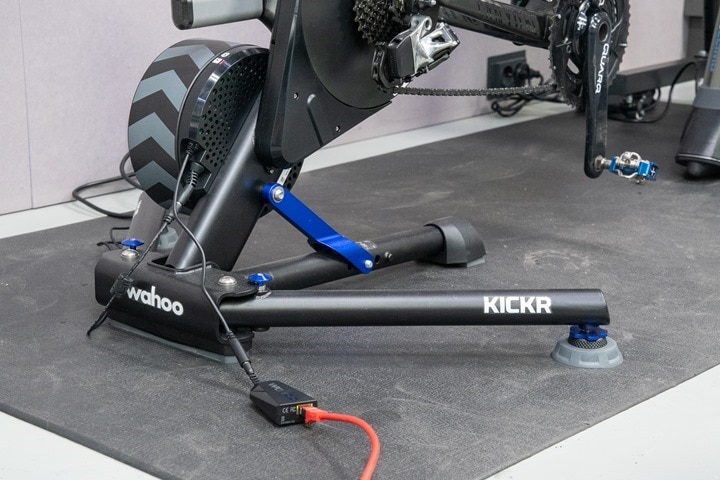
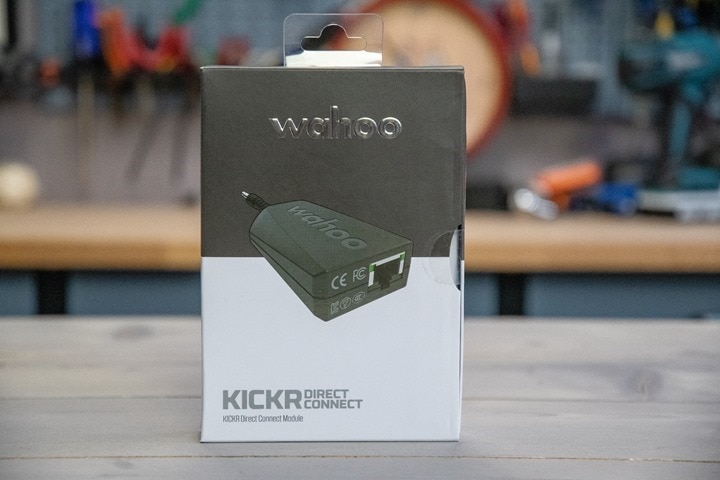
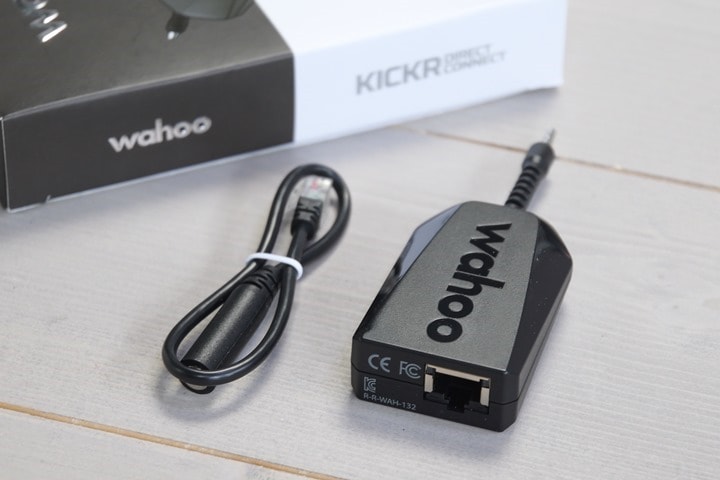
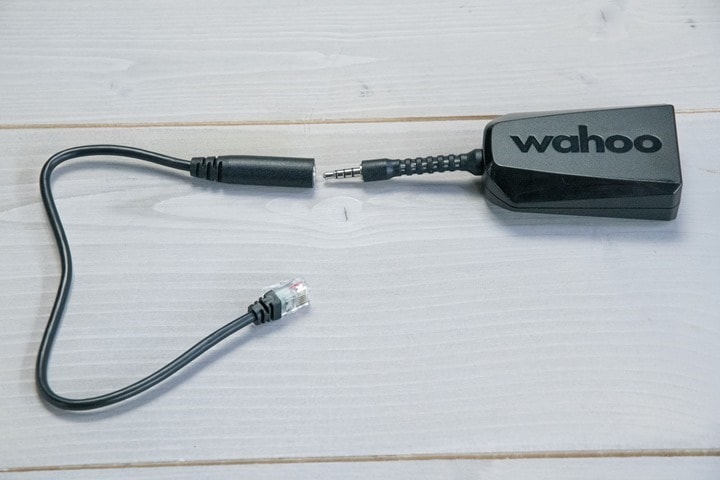
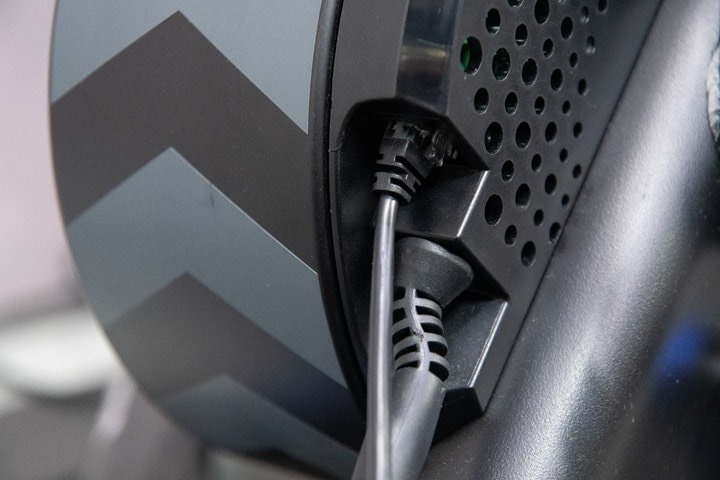
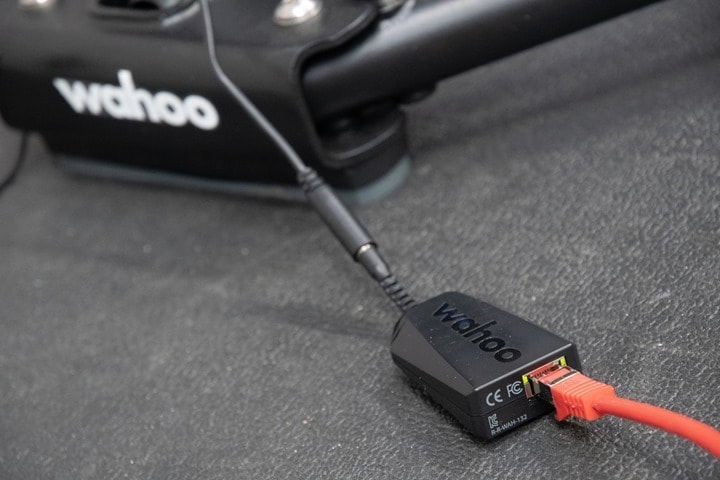
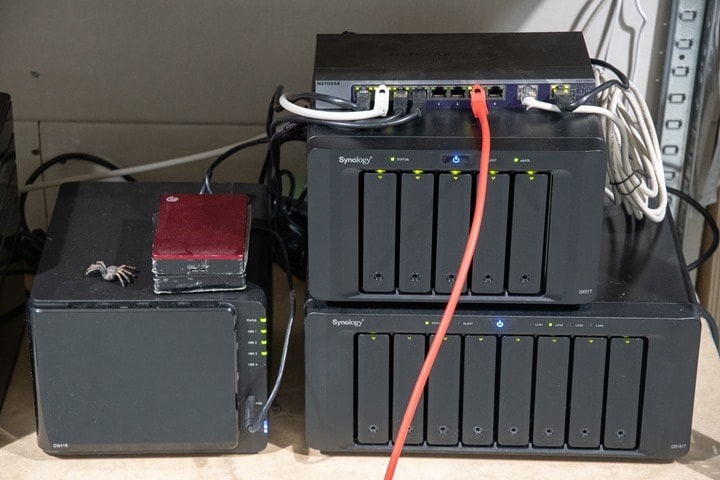
![clip_image001[6] clip_image001[6]](https://media.dcrainmaker.com/images/2021/01/clip_image0016_thumb.png)
![clip_image001[8] clip_image001[8]](https://media.dcrainmaker.com/images/2021/01/clip_image0018_thumb.png)


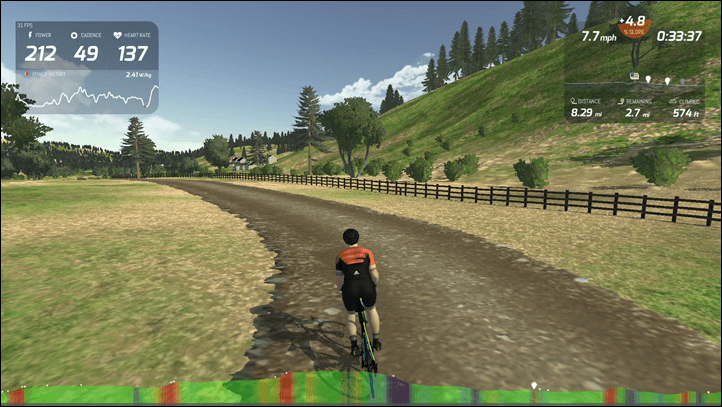
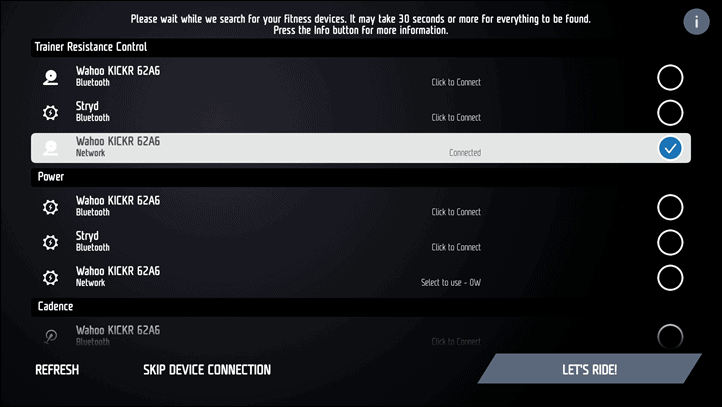
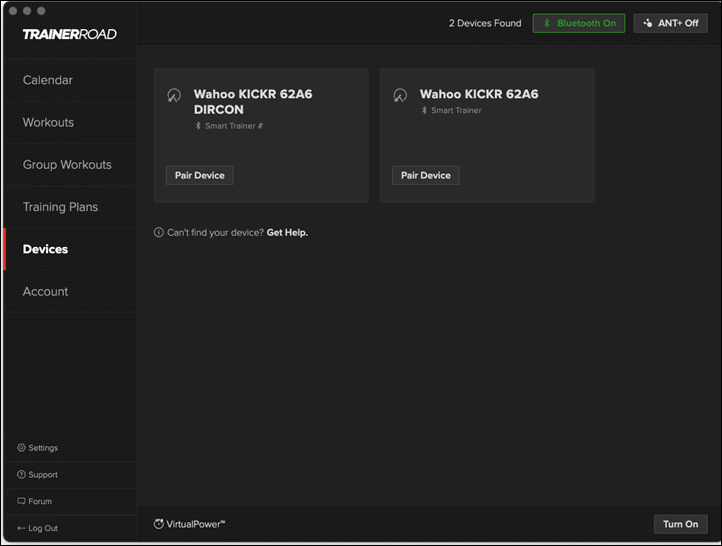
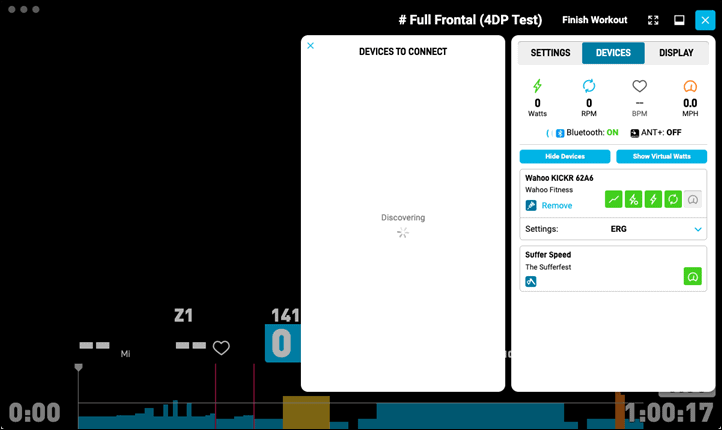
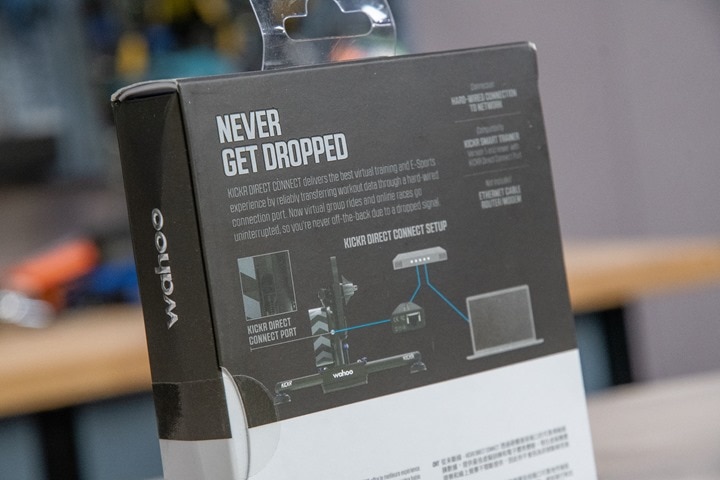
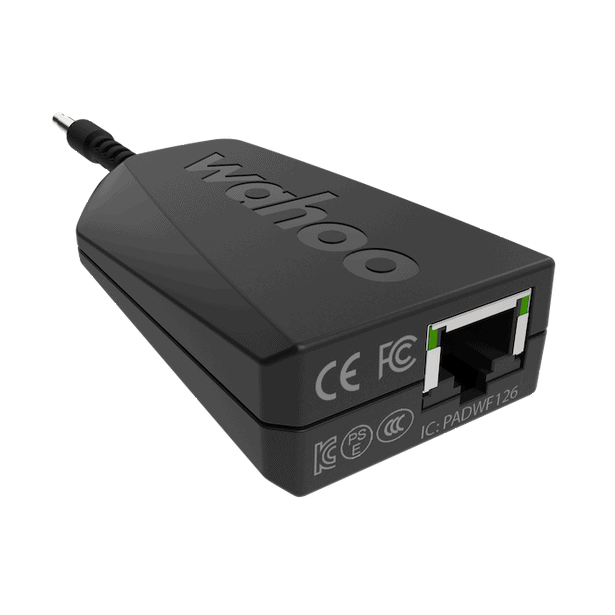

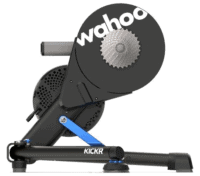




















Nice to be the first here. Funny that SufferFest, being part of WAHOO portfolio does not support the “dongle” yet.
Anyway, this makes more sense for a gymn case scenario…for home users, WI-FI would solve any connection issue…im my opinion.
While it is in their app, but’s just not working for myself and some others. Yet is working for some of their other beta testers.
Dongle
~Another 5 year old boy
Dongle was the term used for hardware keys required to run CAD (and other systems) going back to the mid ’80s, which is as far back as I know about. A 5 year old boy back then would be ~40 now.
Why not just build wifi right into the trainers?
I believe that would/might interfere with ANT+/BLE signals.
I suspect eventually we’ll see that. After all, Peloton does exactly that and still allows you to connect to both ANT+ & Bluetooth Smart HR sensors. ;)
More obviously, would this not then stop you from connecting wirelessly to the internet? If you’re laptop is connected to the Kickr by WiFi it would presumably then try and get internet through that and wouldn’t be able to connect to your actual wifi no as its single channel? I’m probably showing my ignorance (but by the standards of bike/ turbo users I feel pretty tech savvy) but then to get a dual-channel wifi connection would presumably require co-operation with Apple and Microsoft who I’d imagine give precisely 0 hoots about Wahoo Kickr drop-outs, I’d imagine this would be a complete non-starter?
Logically that’s where the tech should go.
Ultimately, it’s silly we have to manually update all of our devices here. If we look at some of the most popular devices out there:
A) Peloton devices: Just quietly update themselves in the background, using WiFi (or ethernet if you’ve plugged that in).
B Garmin watches: Also just quietly update themselves each night, using a blend of WiFi & Bluetooth updates from our phone.
I believe the intent was to say that the Kickr/trainer-of-choice would connect via WiFi to the network, just like the dongle is doing now, and then the computer would see it from there. No conflicts, no muss, no fuss.
And Ray – what’s the beaten-to-crap red thing to the left of your NAS boxes? Looks like a couple of external drive cases fell off of the cargo bike at full speed…
Haha…yeah, those are just some external drives. They still have the plastic wrappers on them, for no particularly good reason. I have no idea why I never took them off, despite using them for a few years.
They had gotten connected to the NAS when they were retired, as their last act of offloading data. And frankly, I was just too lazy to disconnect them after they offloaded their goods. So…they’ve been sitting there since. Probably a year or so now.
WIFI chips on computer are also BLE…do not know about ANT though
It is working for me. I just plugged it directly into my laptop.
maybe we can one day dream for 5ghz wifi built in. If they just do normal 2ghz wifi it would solve nothing as its on the same signal range as ant+ and bluetooth and is the main reason why indoor has more signal issues then outside
Solution for a non-existing problem in the cycling industry, episode 123832227,
The problem with wireless interference and poor signal quality is very much existing. It’s especially annoying in Zwift.
Have Wahoo stated it is or will be an open standard?
Agree with Justin that trainers should have WiFi (and LAN ports).
Prob needs to be an FE-C over Ethernet standard (or something).
I checked with Wahoo, and they said they’ll make it available to all other trainer brands and apps. They said in their conversations with app companies, everyone agreed they’d prefer not to have another standard. The firmware is updateable on the Direct Connect, in case there’s reason to change something.
At the moment there isn’t yet a specific site for where to get all the specs, but that companies can e-mail Wahoo to get it.
For developers that don’t already have Wahoo’s various e-mail addresses, they can just e-mail support@wahoofitness.com to request the API for this.
Seems like unnecessary complexity to have a three separate points of connection, plus a dongle. Put the electronics in the trainer and an RJ45 socket, and use an ethernet plug without a locking clip. We’ve all got at least one of those cables. :D
“They said in their conversations with app companies, everyone agreed they’d prefer not to have another standard.”
So a de-facto standard from one company with no authentication or encryption is preferable to a real standard?
“So a de-facto standard from one company with no authentication or encryption is preferable to a real standard?”
Well, right now neither ANT+ or Bluetooth Smart power meter or trainer specs leverages either of that (though, both are technically capable of it). So its basically a lateral shift.
A real standard isn’t viable at this time. Sure, I’d love one – but I know it’s not going to happen, because we’ve got too many conflicting interests. ANT+ from an organizations standpoint used to be able to establish standards, keep up with the times, etc… BT on the other hand, doesn’t really give two hoots about sports stuff, by and large (from a true standards standpoint). One only needs to look at the dumpster fire that is the power meter spec to see that.
Then we have the companies themselves. Zwift, who has the most power here, has the least technical expertise in the standards game. I’d point to have a dozen other vendors with people who understand the ANT+/BLE spec *FAR* deeper than any engineer at Zwift. Which, is why we see issues that we do. And it’s why Zwift says “later this year” as opposed to now, for the wired spec. Nobody really cares at Zwift about technical stuff from an organizational level*, and it constantly creeps up on them in funny little ways.
*I know there are individuals like Wes and others that do, but they aren’t given the power to drive these sorts of discussions without management getting in the way in various manners.
There is something weird going on with zwift, they literally have no desire to release any feature let alone non very important bugfixes when they do.
As someone who has been to multiple software and hardware startup who acquired (or even aquihired) this remind me when we are in quiet period doing the due dilligence, is this what happening now?
DC killing products like a boss lol
but you right – this should have been built into the trainer instead of this half baked solution
Shouldn’t they be called to task for using an older connector that has a poor retention system ? For all of this money why not a usb to rj45 adaptor ? Or usb straight to the computer?Ethernet cables are not intended for straight machine to machine, there are use cases ignored here. This looks like an expensive solution that is not fully baked for 2021.
I want to plug directly into a laptop, if I take my gear to my friend’s house.
I called them out on it in my KICKR V5/2020 post (and video), as well as in this post too.
In this post I did reference that, but mostly I was too busy calling them out for the fact that it isn’t working properly.
Will this eventually spread to other brands?
And why have the two cables (power and data) going to the unit? Why not just jump to PoE if you want an enterprise level feature?
I suspect it will spread, esports requirements will demand it (especially in a normal world where people travel again and there are real-world esports events again).
Without looking up the PoE spec, I suspect it doesn’t deliver enough power for a KICKR.
I believe it is currently limited to ~25.5 W while the KICKR currently takes a 50W 12v DC input
If you look at something much simpler in design like a Concept 2 erg and how they do networking for the PM monitor, you can see a lot of potential for events where you could even daisy-chain a bunch of Kickr’s together for a race.
This does make me wonder why these trainers can’t just have WiFi in them natively (if a lightbulb can do it…) hence avoiding the necessity to bridge between BTLE and something like the Companion app, which is my preferred way of connecting at the moment, despite having an assortment of dongles available.
802.3AT supports 25.4W delivered to the device per the standard.
802.3BT (emerging standard) can deliver up to 90W to the device.
802.3af and 802.3at won’t supply enough power (based on the output of the supplied Kickr V5 power adaptor of 60W, I haven’t measured the consumption on the DC side). 802.3bt would, but you’d then need to ship a PoE injector as well (given the tiny percentage of people who would be connecting to a 802.3bt switch otherwise), and then they would need a DC converter to drop the 40-50VDC down to 12VDC, which I guess they could have integrated into the dongle but then you’re looking at more cost+complexity and back to two cables plugged into the Kickr anyway.
Do you know what is the profile of data that is being transmitted via this adapter?
Is it the same data format as the ANT+ or BLT?
I’m curious as to how many people have their trainer setups in a location where a wired connection is feasible. In my case, my trainer is in the basement and my network equipment is two floors above me. I really have nothing at all using a wired connection these days.
Yeah, it’s a challenge. You could technically put a WiFi bridge in place to get it back to the WiFi network. For example, with Google WiFi you could actually plug it straight into that node.
I was thinking the opposite. I’ve had turbo trainers in garages and basements where there’s been thick walls or distances to the router and the WiFi signal has been too weak to smoothly run Zwift. I’ve used Powerline adapters previously and still prefer a wired connections for these locations and the experience as far far better. If the Zwift companion app drops, no big deal. If the PC connection drops in a race, then you miss the action. For the device running Zwift/training app, I’d pick LAN over WiFi every time! For the peripheral to device, Ant+/BLE is OK and minor signal drops occur. If it was peripheral to device via LAN and no drops, perfect!
Isn’t $99 outrageously expensive for a seemingly simple data communications dongle and cable? Is someone going to offer a non Wahoo branded solution for $12.99?
Thanks DC
Yes, too expensive by at least $80.
Yeah, I find the price… impertinent.
I guess it will only be bought from people that really struggle with the ANT or bluetooth connection.
I guess Ray is right, this will come to the trainer directly in the future. Just makes much more sense.
I imagine that a similar solution might be good for smart bikes which are huge so you set them up once and don’t move them.
A trainer is relatively portable, so you can put it away (when the weather is good and you can ride outside). This extra wire to a trainer adds another thing to take care of when putting the trainer aside.
It’s great that it’s optional, so you don’t have to have it in place if you are happy with your BT connection and always put the trainer away, my, my trainer hasn’t moved for nearly two years and always has a old bike setup on it (even in the summer)
I’d happily pay for this on my Neo (even consider moving to Kicker for this) as every time my neighbour turns on their microwave TR drops out, can’t do workouts when they cook meals, this would free me to train when I like
Great job Wahoo for giving people options
Kudos to them for selling a $15 usb-ethernet adapter for $99. That’s good business smarts. I suspect it’s about 5 minutes until someone works out which chipiset they’re using and crimps an RJ25 instead of USB to a cheap version. Put all the plugs, jacks and sockets you like in line on the cable, but my money is on those 4 pins being USB.
Kinda makes them look a bit money grabbing though, which isn’t how I saw Wahoo, despite the high price tags.
Also, I’d like to see you actually test (preferably on video) whether the plastic RJ25 hook breaks before or after the metal spring in the jack gives way when you actually do kick it…
Would this work ?
2 Pack 6ft Phone Telephone Cord RJ11 6P4C to RJ45 8P8C Connector Plug Cable – 2 for $9.
link to amazon.com
Or is there something ‘magical’ about the $99 Wahoo adapter?
The Wahoo adapter is essentially an Ethernet adapter. It’s got electronics in it (including the lights you see), so a simple cable wouldn’t have any of that.
Hmm, surely it’s more than just an “adapter”?
On a PC, a USB-Ethernet adapter does the physical form factor conversion to allow an ethernet cable to connect to a USB port, but the IP stack that is running that network connection is still native to the PC.
On the Wahoo device I’d imagine that the IP stack that allows it to talk to the network is contained in the dongle, not the trainer. It’s the dongle that gets an IP address on your network, not the Kickr.
That’s likely why it’s $99 and not $15 like every USB-Ethernet adapter is.
Pity Wahoo didn’t call it the “Ntwrk” or the “EthRnt” though. Missed a trick there I think…
Still overpriced for what it does.
Would be really interesting if someone could get this dongle to work with a computrainer
But… But… But…?! Oh, I give up – somebody’s obv., been studying Apple and their ‘ecosystems’ methodology. $99 for an ethernet to jack adaptor!?
Worlds. Gone. Mad.
It’s more the pre-planning of non-standard components to drive additional revenue streams that grinds my gears.
If the trainer was cheap in the first instance, I may not mind.
However for the price, the connection could have easily been USB and then the end user could utilise whatever they needed/required.
With this non-standard connection, Whahoo ‘owns’ the ecosystem of external/compatible products, which means a new ‘dongle’ every time a new piece of wired functionality is required.
I get it. I understand it. Doesn’t mean I need to like it.
Haha! Apple’s sells a USB-A to Ethernet adapter for $29, and Belkin’s USB-C to Ethernet adapter for $29. Apple also sells one of the world’s fastest laptops starting at $999. You’re going to need a new meme.
True. And I have an Anker USB-C to Ethernet adapter.
And as much as it’s easy (and mostly correct) to make fun of the pricing here, the simple reality is that this is a low-volume product. Apple will likely sell millions of units of that adapter over time, and Belkin probably in the same ballpark.
I’m not defending the pricing – but, simply pointing out that we can’t always point to Apple as a comparison for everything. It’s simply a different business angle with different volumes, and different underlying revenue sources.
As I’ve said above, i think this is more than an adapter. It needs to be a computer interface between the trainer and the network, otherwise the trainer has to have a full IP stack included.
The cheap USB – Ethernet adapters don’t operate at Layer 3 like I’m assuming this device does.
This is more like a Raspberry PI with a dedicated hardware connection to the Kickr (which still doesn’t make it $99 admitedly…)
My bad. Apple is a clumsy metaphor to use around price.
Meant more the practice of using non-standard components to lock into an ‘eco-system’ to drive additional revenue, which has been designed by choice.
Also said it is more expensive than it needs to be, BUT if it appeals to you, and this might help with your network issues (see above and my neighbour and thieir microwave) or you have lots off devices side by side, this is a LOT cheaper than the opositions version
Presumably the price funds their support costs. No one will buy it unless they need it, and since they need they will reach out for support if it does not work perfectly.
Question. Can you pair a heartrate monitor to the Kickr which then transmits hardwired to the computer?
No. You’re talking pass-through type stuff, or bridging. The latest JetBlack trainer does that, but not this.
That’s a shame, it would be nice to have an all in one type connection. Heartrate to trainer trainer to PC via ethernet. The Apple TV has been rock solid with the connection to both the trainer and heartrate as well as overall wifi connection.
Interesting that Wahoo is using .local for so-called zeroconf with this device. Assuming the dongle is IPv4-only?
Doesn’t the kickr bike have a 3rd jack just like the 2020 model… wonder if they would make this compatible.
Attention, there is a ? near your NAS.
I don’t see the point of this device.
Unless you have a fully wired setup (which none has nowadays) you are still at risk of WiFi dropouts.
My main problem is wifi dropouts and losing zwift riders around me: never had a ANT+ or BLE dropout
Many people still have fully wired setups – and I’m one of them. Especially for work, wireless interruptions are a PITA.
This is hilarious after 10 years of shilling wireless everything no more ugly cables in the way just buy a 20 ft USB extension now buy our premium add on cable
Nice Spider in your router/hub picture.
This just seems clunky to me. How many people actually have a spare cable from their router to their trainer?
I’d be very surprised if everyone’s router is within sight of their router which leads me to believe that you have to run wires which doesn’t seem likely for the majority of people.
If they are currently using a wired connection is it possible to share it?
I understand how this might help people that are having wireless connection issues but it doesn’t appear to be a simple or easy solution if it requires new wiring.
I was hoping for a direct connection to a PC.
You can always add a switch. And I saw mention on another site that it did work as direct connection as well. But then you need two RJ45 ports or wireless on the computer.
this is an old post but thought id reply. I run this directly into my laptop from my trainer. but I only paid 45$ off a friend for the adapter. and depending on if you have a spare ethernet plug you may have to get a spare cheap usb to ethernet adapter
What is the typical range limit of ANT+ versus BLE connections assuming no concrete in the walls or floors?
Can you man-in-the-middle the Ethernet stream and manipulate your data/watts?
Why doesn’t the adapter put out an Ant+ emulation via USB…then no computer app would have needed to be changed…? Is it because that wouldn’t support phone apps…?
If the connection isn’t secure, sure. But the same goes with other types of connection.
I can’t believe that in such a tight industry they couldn’t coordinate integration using some kind of SDK so that the biggest players would actually be ready at launch time. Let alone Zwift and months required…
PS: what’s with an the Synology’s? :)
Gotta make my stqndard IT guy comment:
Never, never, ever buy HW based *solely* on a future SW release/upgrade. Make sure it has enough functionality for *you* out of the box to make the purchase worthwhile, and consider any future functionality/features a bonus.
Took me too many hard lessons to learn this.
Why didn’t they put the trrs directly into the trainer? You still get the quick release with one less connection
As another poster here mentioned, this appears to be more than an RJ11/RJ25 to RJ45 connector. They need a microcontroller and firmware to handle the IP stack and the packet conversion of serial data. I imagine things unfolded with an idea to get this into the v5 but time to market and cost would have delayed and driven up the price. So, they put in an RJ11/25 on the bike for the serial data with plans via working prototypes evolving into this product with it’s Raspberry Pi like processor, firmware stack, and ethernet port. Not having the hardware, no idea if this is correct. But makes sense. I’ll be buying one for my v5.
Sean
Hey, something I may know a little about.
I’m a HW engineer working on network stuff. A few lukewarm takes on here: “it’s just a dongle,” “why not use a ethernet port,” and “why don’t they just put wifi in?”
First: “It’s just a dongle”
Not quite. It looks like it’s hosting a rudimentary server. I bet it’s essentially using the 4p4c (RJ12) connector to output some serial data stream that’s then being processed and encapsulated by the mini-server. The Kickr itself probably doesn’t have any extra processing bandwidth, or the SW to run this at present. The ANT and BTLE radio has a little controller that’s programmed to do this for those connections, you would need another processor AND SW to do the same, which a standard dongle does not have.
Next: “why not use a ethernet port?”
See part of my first answer. I don’t think they’re running a real OS that can do the conversion from the bit stream to ethernet encapsulation. Secondly, there’s a whoooole host of conformance and regulatory testing that you then have to prove out for your little device. And different countries have different requirements, it make it more complicated. You have to meet isolation requirements, have someone on your staff who knows networking hardware to tune the PHY and magnetics, integrate it all with your system. All this for something with a low attachrate that will drive up costs and time to market. Plus, they have to miniaturize it and find somewhere in the trainer to put it. The 4p4c (RJ12 port) on the trainer itself is subject to any of this compliance, they then only have to pay some outside company to make the mini server that takes the datastream from the kickr and sends it out over the port.
Lastly: “Why doesn’t it have wifi”
Wifi is HARD. While the kickr already has wireless baked in with the ANT and BTLE connections, they don’t have to undergo the same certifications as low power transmitters that wifi devices do. And where I said that ethernet adds compliance and regulatory requirements, wifi is in a whole ‘nother league. Especially if you want to use 5GHz band, there’s a whole new host of compliance issues there due to the overlapping channels of government radar that concern transmit power, moving channels if radar is detected, etc. You then have to still add the encapsulation stuff from the above topics.
Now, what could some enterprising person do if they wanted to DIY this? I figure this would be a relatively straightforward Raspberry Pi operation, which does function ideally as a server. You would have to decode the inputs from the proprietary serial connection, but it looks like GPLama already put some good work in using wireshark to show what’s being output on the ethernet side.
thank you for this comment, the (wireless) regulation side is probably something consumers think very little about, when Wahoo wants to ship to dozens of countries around the world.
Isn’t it infinitely more likely that the Kickr uses a SOC which has USB 4 pin headers and firmware which supports USB network cards? The network stack would be included by the vendor of the SOC so all they’d need to do is include it. If they really have developed a tiny server running from serial power then they’ve spent a lot of effort doing some pretty standard things. Given the form factor and wiring match exactly with a USB Ethernet dongle Occam’s razor would suggest it’s exactly that.
I didn’t notice the lack of power input to the box. It is quite possible that it is USB, but I think a SPI, UART, or rs232-like interface is just as likely given industry standards on low cost controllers. USB I believe requires IP licensing $$ to implement on the chipset itself, where these others don’t.
If you charge $99 for a $15 device licensing is really not an issue. If they are using a SOC then it probably includes all that stuff anyway. When you consider what Wahoo do it’s unlikely they developed any of this internally. Usually they take some open source stuff and…repurpose it. They’re good at what they do, but off the shelf seems their preference.
“since it’ll dethatch cleanly rather than ripping apart your dongle”
I hate when someone dethatchs my dongle! :-)
Shanes’ video on the subject reveals the presence of the FTMS service id (at 4:25 min).
Do you know if Wahoo is planning to support FTMS on the Kickr v5?
They’ve long promised it. You can also see it in screenshots here too.
Hang tight!
Wow, an ethernet cable. Have seen one of those in a decade.
Maybe kicker v6 we can just get a usb port on the side also? Seems like the data just going straight to my pc over usb would have alot less complications then having to go from rj11 to 3.5mm audio fourm factor to a dongle that changes it to rj45 and then has to go over my network to then come back to my pc.
Hello, what about the ‘cheap’ wahoo snsp? It would be good not to wait minutes as in case of fulgaz. Oddly rouvy finds snap in same conditions faster.
BT did not work with my windows laptop, and Wahoo customer service told me that I needed to use ant plus for best connection. My inner 5-year-old also grins when I boast that I have multiple DONGLES! I know right?!
I simply put a USB extension cable on the laptop, plugged in with the ant plus dongle, so I could park it right beside Kickr. Connection has been great, no drops in over a month of use. $20 solution.
Is $99 really a legit response by wahoo? They move the Kickr v5 to market with a goofy little connecting Jack. I just paid $1,200 for this trainer, why are they not simply giving me this dongle the correct their engineering faux pas?
I have a hard time connecting my Saris H3 to some of my devices through Bluetooth. It does connect to my iPad without a problem. I wonder if something like this would be useful for folks that for some reason can’t seem to connect the trainer to their devices. Technically, you wouldn’t even need Bluetooth on your device, right?
With all the extra bandwidth I’m surprised they don’t refresh more often, both in terms of power data being sent out and how often control signals can be sent to it. Sure, current hardware may not take advantage but for the future. Also surprised there is no power meter broadcast over the network to allow any application to receive data from the trainer but not control it (multicast?)
Is any extra data being sent out? I.e. maybe allow better power matching
On your last comment you mention you expect this “Direct Connect” interface to become a standard.
But it’s my understanding this interface has no authentication or encryption. It sounds like raw binary trainer data sent straight over TCP. I hope it’s just a temporary patch. Because that is both really poor privacy practice. It’s 2021 – home appliance manufacturers should know better by now than just spewing unprotected data on a network. And also really poor (reverse) progress towards making competition-grade secure connections that are hard to hack. Based on gplama’s sniffing with Wireshark, it’d be about a 10-line script to hack the data, and rebroadcast it at a higher torque/power.
Standard ethernet cable only uses wires 1, 2, 3, 6. So it will probably take someone 30 seconds to figure the pinout on the RJ11 connector. Hopefully we will be able to crimp on the 4pin RJ11 to an ethernet cable and save $97. :)
You know there is extra logic to do tcp network communication?
Indeed. There needs to be a host running the stack, which is very unlikely to be in the trainer.
It’s odd, 15 years ago trying to get a Tacx I-magic to talk to a PC with a direct connection USB cable involved 3 days of ritual sacrificing of goats and virgins. So to have this now as a solution is ‘interesting’. And the situation at the moment does suggest they are using the software developers let go from Tacx after the garmin ‘merger’, as it’s exactly the same as all those years ago….
Definitely see this for gyms / multi device environments. I’d probably use cables at home (Mine and OH next to each other), not because of connection drops (HRM occasionally drops, very occasional power, but never lost connection to the Neos that I’ve noticed), but because occasionally when starting Zwift then the wrong PC connects to the wrong trainer, and cables direct to the ethernet ports (actually USB would be better) would take that occasional issue away.
I was about to make a reference to the full-circle from Tacx iMagic USB connection, to everything wireless, to users saying “can’t we hardwire a USB connection here?”.
But I’d venture that the prime target of wired connectivity would be on-premise eSports events, to avoid man-in-the-middle attacks on ANT+ and/or BLE, and multi-device setups, gyms and others. That would explain the device-to-network concept. It’s kinda weird not connecting the device to a PC running the apps, but rather to the network, until you connect 15 devices.
You have to learn to describe items in a normal way. Not as a part of advertising for companies. I have lots of other examples that you do not make investigations about products, but just make advertising. Sorry, not interesting and silly all those descriptions. A shame that lots of people will believe your comments.
Huh?
Let’s see if NPE comes up with an ANT+ / BLE – Wi-Fi (and wired?) “Direct Connect” bridge. Like “CABLE”, but for Direct Connect :)
Would this be an awkward time to tell you such a solution was actually one of their first products? I have a bunch of them, the NPE WASP.
In fact (to make this even more funny), Wahoo actually built a KICKR studio solution in a box based atop it some 5 years ago: link to dcrainmaker.com
Excellent point, totally forgot they had already done that. Guess these “KICKR Connected Studios” weren’t a huge success, given that kickrstudio.com returns “You may have mistyped the address or the page may have moved.”
The difference here would be allowing non-KICKR platforms (NEO; Direto; …) to benefit from this new “Trainer Control over IP” stack in all the updated 3rd party apps.
I cycle twice around my little town (about 12km to 15km per lap) at the end of the day, and my technology is … the bike. Of course, it uses leg force to operate and my sweat tissue to measure =))
Id honestly do anything to have this on my TACX NEO 2T.
I’ve exhausted all of the possible troubleshooting guides from Zwift, Zwift support themselves and what’s online.
Hosted the game on iOS, Apple TV, PC and used BTLE and many ANT dongles including TACX without any solution to dropouts.
It’s the environment or a trainer issue but a hardline connection would make me so happy!
ANT dongle on a long USB active extension cord plugged to the Mac / PC, assuming dropouts are not on the internet connection side.
I indeed have a TACX-brand ANT dongle on a USB extension placed directly under the trainer, in a ziploc for sweat protection. No issues with Garmin watch pairing to trainer, only Zwift from my iPad, Apple TV, or PC (LAN). I’ve tried BTLE and ANT without much difference although BTLE seemed to have “patterns” to the dropouts whereas ANT starts dropping out after ~20 minutes and on irregular intervals.
Gigabit internet over LAN to PC and Apple TV
Colin you say you’ve done all the tests that support has given you and I am assuming that will have included these, but just in case, some things I went through. Note in my case the trainer seemed fine, but I was getting some powermeter drops.
1) install a wifi analyzer on your mobile – several free downloads. See if there is anything broadcasting on channels 9-12 on the 2.4ghz spectrum. Normal culprit would be your wifi, but could as easily be a neighbour if you have one close. Changing your wifi chanel is easy, may need some detective work and a 6 pack of beers if it’s a neighbour that’s not used an obvious name.
2) I don’t have my dongles right under the trainer (neo1 in my case) as logically to me a large electro magnet isn’t the best thing to put a receiver next to. So I have mine under the BB, slightly left and so in line with the LEDs. No idea if that’s where the aerial is, but I’ve not had any issues with other positions either, and we have the other issue in that with 2 PCs/Neos then if we plug them in in the wrong order the both PCs will connect to either NEO, so reception is strong.
3) Wireless mice/keyboards – can cause inteference, so try without
4) not one I’ve had, but what are you plugging the USB cable into – laptop or desktop? I read somewhere that low voltage USB ports didn’t do well with the ANT+ dongle. Seems unlikely to happen after 20 mins, but just a thought.
Duncan – thanks for those suggestions, I will try #2 as I have used a WiFi analyzer on my phone, changed my 2.4GHz band’s channel, unplugged WiFi altogether (in ceiling access ports on a wired gateway), disabled my smart bulbs at the switch, etc. and ensured no other 2.4GHz devices are nearby.
Any more thoughts since the normal stuff is ruled out?
The post is slightly out of context here but relates to the Firmware update the Wahoo just did to support this dongle. I performed this update on my latest version of the KICKR and now when riding in Zwift the trainer doesn’t adjust to the terrain. I’ve recalibrated both in Zwift and contacted Wahoo support who directed me to do a manual calibration on the Kickr as well. Nothing solved the problem. I convinced my brother in law to also get a new Kickr and he updated to the latest firmware as soon as he got it and is now having the same problem. Anyone else having this issue on the latest firmware?
If you haven’t yet, you should contact Wahoo support about it. I’m staying clear of the update though, thanks to your post.
I have reached out to both Zwift and Wahoo support. I’ve gone through manual recalibration of my Kickr and that hasn’t resolved the issue. Also calibrated with Zwift still no resolutions. Wahoo asked me to do a spin up and down routine raising the power up and down in 1 min intervals. Doing that today. I am not sure whose issue it is, but was definitely broke by the firmware update. Steer clear of it for now.
Sorry, that was my full attempt at wisdom. #fail.
Do you have any update about this issue Tom?
Excellent! Can’t wait for my hard wired Wahoo Tickr to come next!
This might seem obvious… but why not build the ethernet port directly into the trainer, and sell an adapter that has MagSafe style connections, so if you do catch it, no harm done?
I wonder if they could just put a USB-C port on the back, then you’d have the option for USB-C power, or you could also use an ethernet adapter with USB-C Power Delivery for power pass through.
So it’s not compatible with Zwift (I assume via WiFi), but what if you connect this device via ethernet into a laptop /pc with zwift installed? Would that work? I’m having a lot of problems with signal dropout on my very good quality network, and it’s really frustrating.
There is no WiFi. It’s either Bluetooth or ANT+, or with this extension LAN. But not with Zwift yet.
In this instance, however, it’s not WiFi, right? It’s a wired connection direct into the laptop which is running Zwift.
I assume the answer is that if its not ANT+ or Bluetooth, it’s not possible. Therefore WiFi or wired, the answer is the same?
It’s wired, but you can make it WiFi via running it to a WiFi router.
Inversely, you can also plug it straight into a computer with a ethernet point too. However, in either case, Zwift doesn’t yet know how to recognize the Wahoo Direct Connect. So…it’s largely a moot point if you want to use it with Zwift, as it simply can’t be connected to yet.
Cheers. Appreciate the clarification.
I’d already ordered one before realising this, so I’ll sit on it until Zwift eventually add support.
How would you wire it straight to a laptop LAN port (without a DHCP server)? There is no way to configure it…? I suspect this is a misleading suggestion…
I guess you would need to configure the device to a static IP with default gateway. Or run a DCHP server on the laptop.
or DHCP passthrough from wifi to LAN?
Nope, not misleading at all. It uses what is basically an APIPA address to self-address itself.
I’ll show it in my full review.
Will Zwift ever support this? :(
Seems to have been ages and still nothing!
Hey Ray, what ever happened to your full report ?
And: any update from zwift ?
Thanks for all you do,
Larry
Yeah, sorta fell off the radar with Zwift not supporting it (yet/still/whatever). Eventually I’ll circle back around to it.
Honest, such little interest in usage aside from Zwift (where, of course, it matters the most).
Now that Zwift supports it, how about that full review? Very curious how it can be connected directly to my laptop and if that would solve the frequent (ANT+ or BLE) drops I now get.
Hey chip this is how I use it. Directly plugged into my laptop. My laptop was a little odd and didn’t like it used in my built in rj45 so I had to buy a cheap usb to rj45 but it works great
To be honest, it’s a huge letdown that it works like this. It would be much better if they simply implemented USB-C if it can’t be a part of the network and it has to be connected directly to the computer.
Unless I’m missing something?
Thanks so much, Damien! No special setup needed in Zwift once plugged in?
Nope it just saw my trainer. The issue I ran I to if I just used the built in network connector is it wanted to use that for internet connection over the wifi for some reason. It to bad it doesn’t have a usb it’s self. But you could get it and if you run into a similar issue then order a cheap 10 buck or less usb to rj45 off Amazon
It doesn’t have to be directly into the computer. If you plug the rj45 jack into your router or a switch that goes to your router it will also work. It just also has the ability to plug directly into a computer
Thx again Damien. It would be harder directly to the router but it could be done if much better than connecting to my laptop. I doubt it though since guessing not much bandwidth needed and I have strong WIFI. Definitely would be better with just USB but anything is better than ANT/BLE drops, especially during a race or hard group ride. For those reading, load your log file into zwiftalizer.com/upload to see how many drops you have. You might be surprised!
Just an update that I got the V5 Wahoo trainer (on clearance) and the direct connect device and it works terrifically. Just plugged it in and there was a new connection to select on Zwift. Best of all, no drops and very low latency. Love it!
Hi Ray,
Any new zwift updates? I’m a bit lost why someone with an iPad or iPhone would get such a a device.
Zwift now supports it. But why someone would get it for an iPad iPhone Apple TV or anything really is signal interference issues. If you have Bluetooth drop or ant drop etc then it may be useful for you. It is just easier on a pc as you can just plug it in directly. 2.4ghz is just a really congested channel we have bluetooth,wifi devices and they are comminly more densely packed in housing areas compared to riding outside. It’s one of those devices you probably know if you need it or want it
Cool review on the new V6 trainer. Also, I’m pleased you are a synology user. I like them and have a couple myself.
Hey DCR so it’s possible to plug the direct connection cable to Apple TV and use it instead of Bluetooth then?
You’d plug it into a network hub/switch/etc nearby, and then Apple TV can leverage it (which is what I do).
Thanks DCR
Hi Ray.
Curious if it is possible or if there are any after market adapters to cover the v5 to wireless Wi-Fi? I have seen adapters for other products was wondering if there is a workaround that is effective. Also curious what the Bluetooth protocol is on the v4 – v6 kickrs. Never see it in the specs.
Thanks
With the latest race mode update from wahoo I’m very intrigued to get this!
$100 is too steep imo. $50 yes.